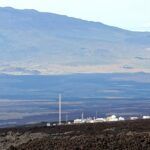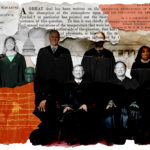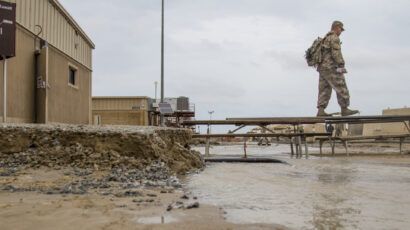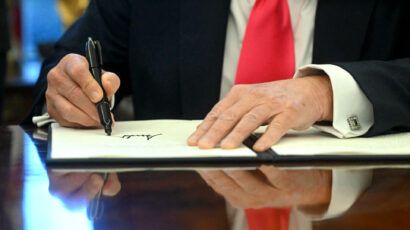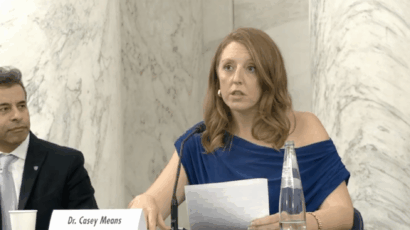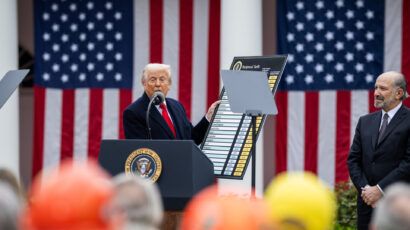Conspiracy of silence: The irresponsible politics of climate change
By Robert J. Brulle | July 31, 2012
In a summer dominated by heat waves and a devastating nationwide drought, it would seem that climate change would be a major issue in the US presidential campaign. However, quite the opposite is happening. Neither President Barack Obama nor the presumptive Republican nominee, Mitt Romney, has focused any attention on this critical issue. In a recent speech on the Senate floor, Senator John Kerry characterized the political discourse in the United States as a “conspiracy of silence … a story of disgraceful denial, back-pedaling, and delay that has brought us perilously close to a climate change catastrophe.” This silence means that we can expect further delays in addressing climate change, delays that we cannot afford.
Presidential politics. Both presidential campaigns have ignored climate change on their web sites. The Romney site advocates vigorous energy development of coal, gas, oil, and nuclear power. Obama’s site focuses on an “all of the above” energy strategy, which advocates the development of all energy sources, including “clean” coal and alternative energy. The statements by the candidates echo this approach.
Romney, at one time, believed in climate change. In his 2010 book No Apology: The Case for American Greatness, Romney wrote: “I believe that climate change is occurring — the reduction in the size of global ice caps is hard to ignore. I also believe that human activity is a contributing factor. I am uncertain how much of the warming, however, is attributable to factors out of our control.” Even this lukewarm statement blurred as the presidential primary contest heated up and opposition to climate change became a litmus test for Republican presidential candidates. At a January 2012 campaign event in Pittsburgh, Romney was uncertain regarding the cause of global climate change: “My view is that we don’t know what’s causing climate change on this planet. And the idea of spending trillions and trillions of dollars to try to reduce CO2 emissions is not the right course for us.”
President Obama has seemingly forgotten about climate change. As recently as Earth Day 2011, Obama was forthright about the need to address climate change: “Today, our world faces the major global environmental challenge of a changing climate. Our entire planet must address this problem because no nation, however larger or small, wealthy or poor, can escape the impact of climate change.” Now Obama cannot even say the words “climate change.” In his 2012 Earth Day address, he coupled auto efficiency standards with “reducing greenhouse gas emissions,” but Obama made no mention of climate change or why emissions should be reduced. In a major address on energy one month later, Obama omitted any reference to climate change, greenhouse gases, or even air pollution.
Public concern. The failure of either candidate to address climate change has had a significant effect on the level of public concern about this issue. Social science research shows that public opinion is heavily influenced by cues from elites — for example, statements issued by prominent politicians and their parties. Citizens use media coverage of controversial issues to gauge the positions of elites they find credible, and then interpret the news based on ideology and party identifications. In a recent study, my colleagues and I found partisan statements to be the largest single factor explaining the ups and downs of public worries about the threat of climate change — and a much more important factor than extreme weather events.
Overall, climate change and other environmental issues have consistently ranked at the bottom of public concerns. A frequently used measure is the “most important problem” question asked by Gallup pollsters. Over the past 40 years, the percentage of respondents naming an environmental issue as the country’s most important problem has rarely exceeded 3 percent. Within subcategories of environmental concerns, global warming or climate change is usually at the bottom. In recent monthly Gallup polls, environmental concerns were mentioned by only 1 percent of respondents as the most important problem facing the nation. Among those mentioning environmental concerns in the March 2012 poll, 78 percent worried a “great deal” or “fair amount” about toxic waste and water pollution. Out of seven environmental issues, global warming was ranked last, with only 55 percent of the public worried a great deal or a fair amount. The presidential campaigns follow these polls, and have thus concluded that addressing climate change is not a high priority. By avoiding the issue, the candidates further drive down public concern — a circular process.
Committed to climate change. The consequence of this inattention is an irreversible commitment to dangerous climate change. Twenty years ago, the United States signed, and the Senate ratified, the United Nations Framework Convention on Climate Change. The objective of this treaty was to “prevent dangerous anthropogenic interference with the climate system,” which was defined in the Copenhagen Accord of 2009 as limiting the overall temperature increase to 2 degrees Celsius. There are three reasons why that goal is now unobtainable. First, even if greenhouse gas concentrations in the atmosphere could be held steady at 2005 levels, scientists at the Scripps Institution of Oceanography have calculated that global temperature would rise by 2.4 degrees Celsius if not for the air pollution that is masking the warming by blocking some of the sun’s rays. Second, as a 2011 paper by British climate researchers explains, emissions reductions that are constrained to levels thought to be compatible with economic growth are not sufficient to stay below 2 degrees Celsius. Only a period of planned austerity and an intensive effort to build a carbon-free energy system could now achieve the goal of avoiding dangerous climate change. Finally, the International Energy Agency has estimated that the carbon-emitting energy infrastructure that will push global temperature rise beyond 2 degrees Celsius is already 80 percent complete, and will be fully installed by 2017. This will lock in future emissions unless capital equipment is retired earlier than anticipated. The best we can now hope for is to avoid catastrophic global warming in excess of 4 degrees Celsius, which will require an aggressive response by governments around the world.
Listening to the presidential campaign, you would be hard pressed to find any inkling of this situation. The official statements still maintain that there is no reason for alarm, and that we can still avoid dangerous climate change. While ignoring climate change might be a good political strategy, both the Obama and Romney approaches are intellectually disingenuous and morally irresponsible. Romney’s position is ridiculous, as it ignores the enormous scientific literature on anthropogenic climate change. But is Obama’s position any better? Any delay increases the probability of reaching a tipping point beyond which mitigation measures will be too little and too late to avoid catastrophic consequences. Yet the Obama administration has ignored this threat, offering instead a thin and uncompelling case for developing clean energy.
Dealing effectively with greenhouse gas emissions will require substantial transformations of both our economic and energy systems, and adoption of politically unpopular measures such as a carbon tax. Rather than attempting to build a public consensus to address climate change, the Obama administration is perpetuating the cultural delusion that we can continue business as usual, and that climate change does not require substantial and politically painful actions. While this strategy might prove to be advantageous in the short term, it saddles future administrations and generations with a heavy political, economic, and environmental burden. Even if Obama wins, he will have built no mandate for action during his second term.
Putting climate on the public agenda. To end the conspiracy of silence, environmental organizations must challenge the irresponsibility of both presidential candidates. One example of how organizations can change the public agenda was the mobilization over the Keystone XL Pipeline. In August 2011, a series of protests and non-violent civil disobedience successfully forced the Obama administration to delay the pipeline.
A second example is the “Flat Earth Five” campaign by the League of Conservation Voters. This campaign has targeted five US Congressional representatives, who deny the basic science of anthropogenic climate change, for defeat in the fall election.
These sorts of approaches need to be applied to the presidential campaign. Both presidential candidates are maintaining the conspiracy of silence, abandoning citizens and future generations to the relentless onslaught of global warming. This political tactic must be challenged. The environmental movement should redouble its efforts to move climate change onto the presidential agenda.
Together, we make the world safer.
The Bulletin elevates expert voices above the noise. But as an independent nonprofit organization, our operations depend on the support of readers like you. Help us continue to deliver quality journalism that holds leaders accountable. Your support of our work at any level is important. In return, we promise our coverage will be understandable, influential, vigilant, solution-oriented, and fair-minded. Together we can make a difference.
Topics: Climate Change, Opinion






